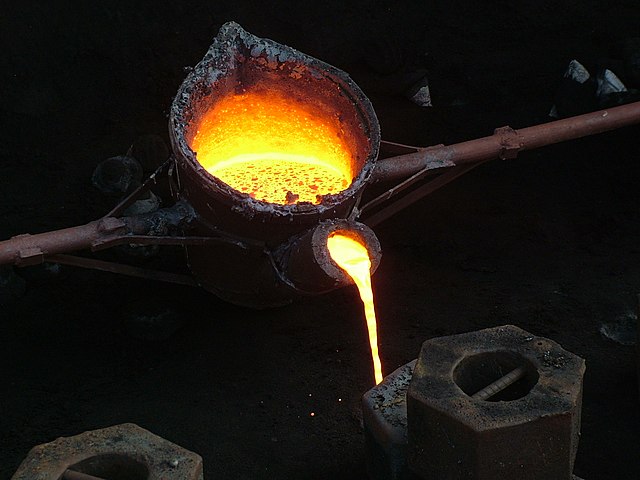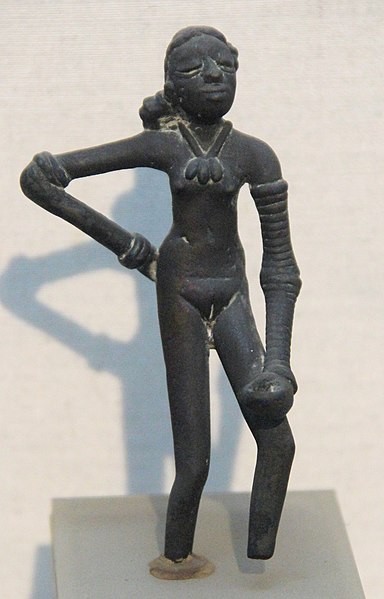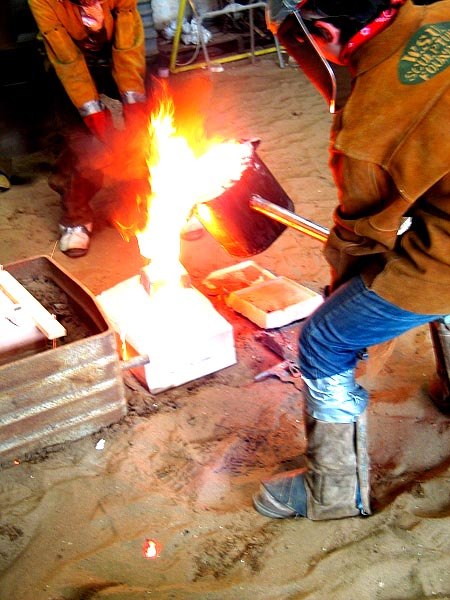Casting is a manufacturing process in which a liquid material is usually poured into a mold, which contains a hollow cavity of the desired shape, and then allowed to solidify. The solidified part is also known as a casting, which is ejected or broken out of the mold to complete the process. Casting materials are usually metals or various time setting materials that cure after mixing two or more components together; examples are epoxy, concrete, plaster and clay. Casting is most often used for making complex shapes that would be otherwise difficult or uneconomical to make by other methods. Heavy equipment like machine tool beds, ships' propellers, etc. can be cast easily in the required size, rather than fabricating by joining several small pieces. Casting is a 7,000-year-old process. The oldest surviving casting is a copper frog from 3200 BC.
Cast iron casting
Dancing girl of Mohenjo-daro
Judenplatz Holocaust Memorial (Nameless Library), by Rachel Whiteread. Concrete cast of books on library shelves turned inside out.
A high-performance software for the simulation of casting processes provides opportunities for an interactive or automated evaluation of results (here, for example, of mold filling and solidification, porosity and flow characteristics).
Epoxy is the family of basic components or cured end products of epoxy resins. Epoxy resins, also known as polyepoxides, are a class of reactive prepolymers and polymers which contain epoxide groups. The epoxide functional group is also collectively called epoxy. The IUPAC name for an epoxide group is an oxirane.
Special epoxy is strong enough to withstand the forces between a surfboard fin and the fin mount. This epoxy is waterproof and capable of curing underwater. The blue-coloured epoxy on the left is still undergoing curing
An epoxy encapsulated hybrid circuit on a printed circuit board.
The interior of a pocket calculator. The dark lump of epoxy in the center covers the processor chip







